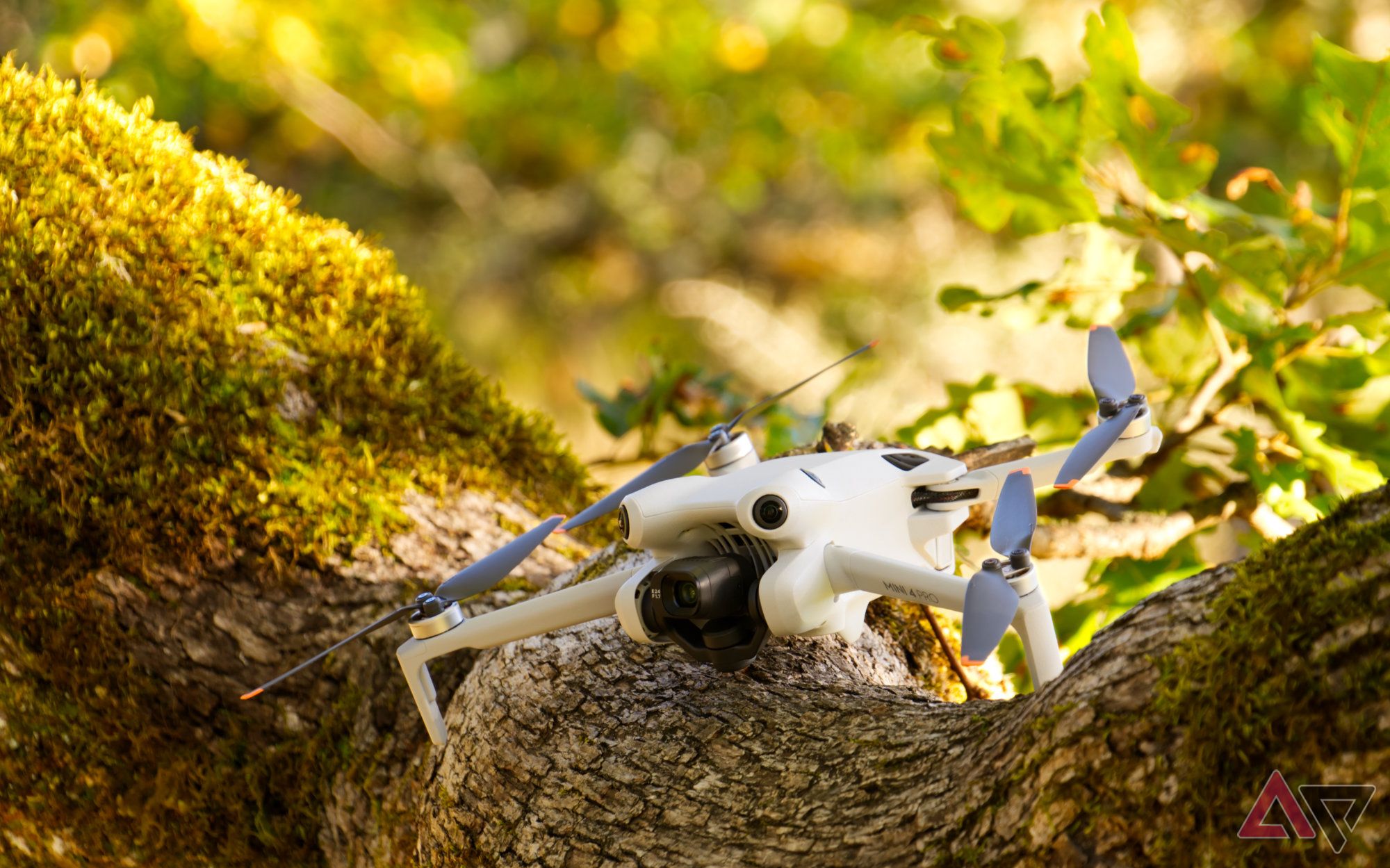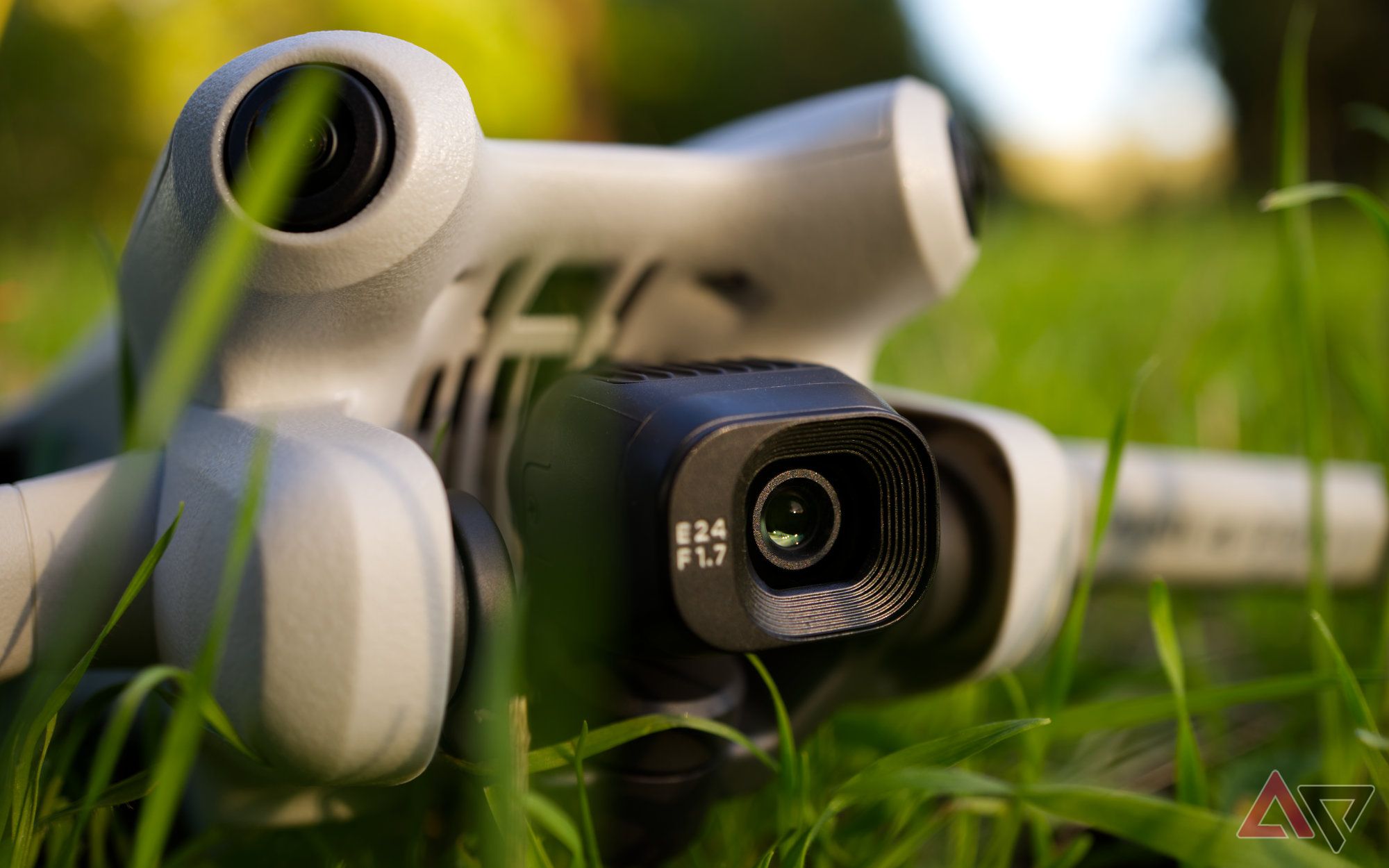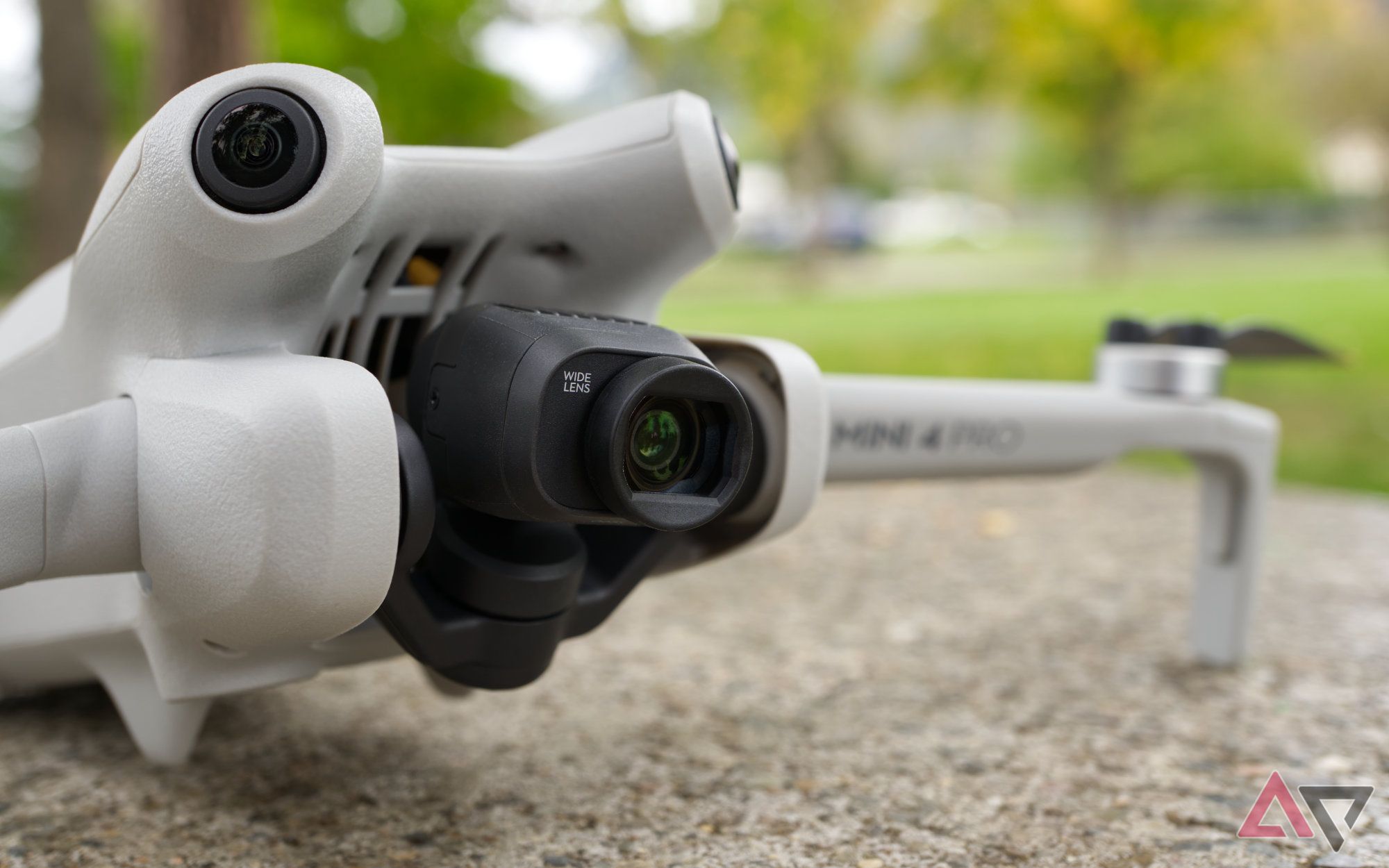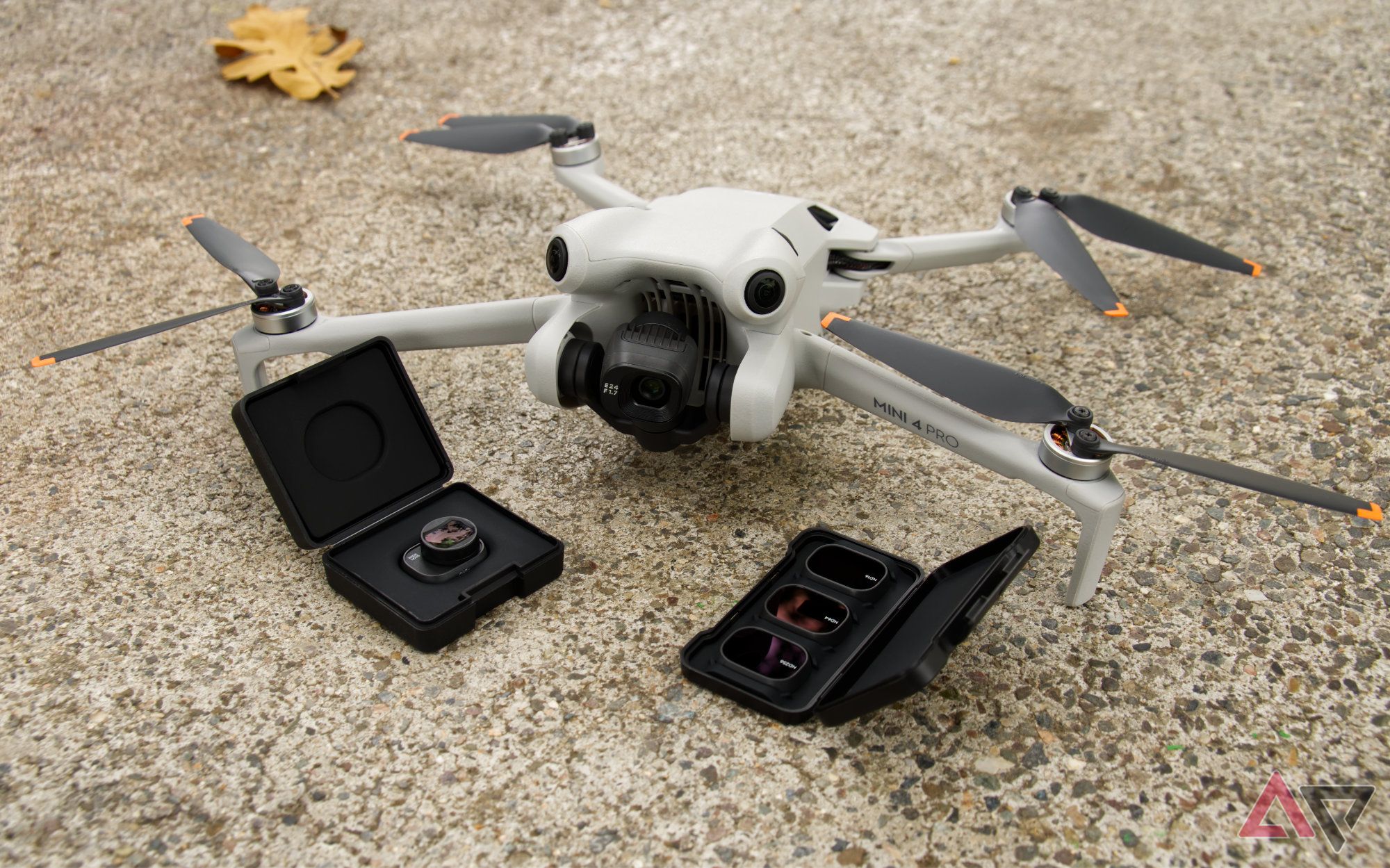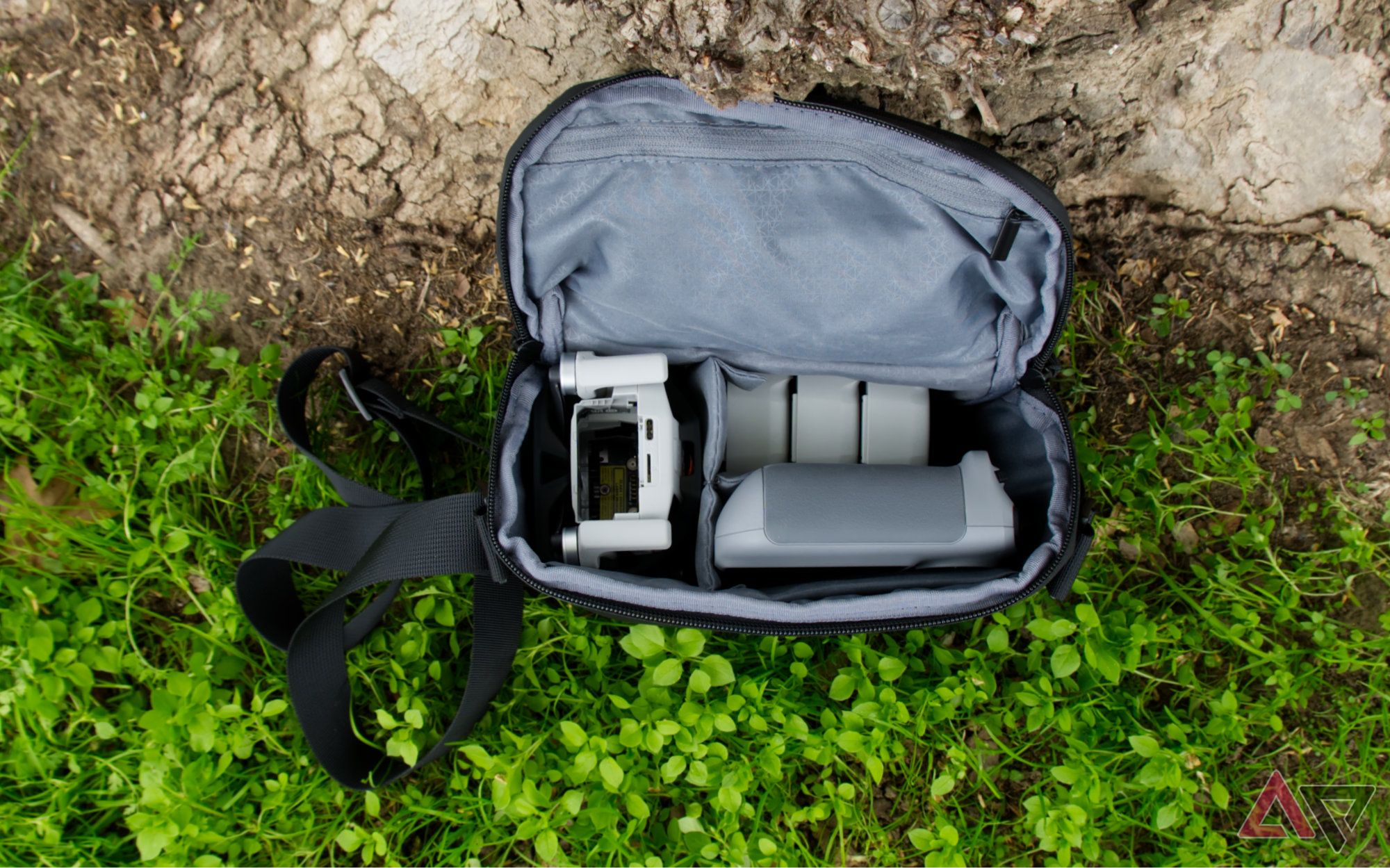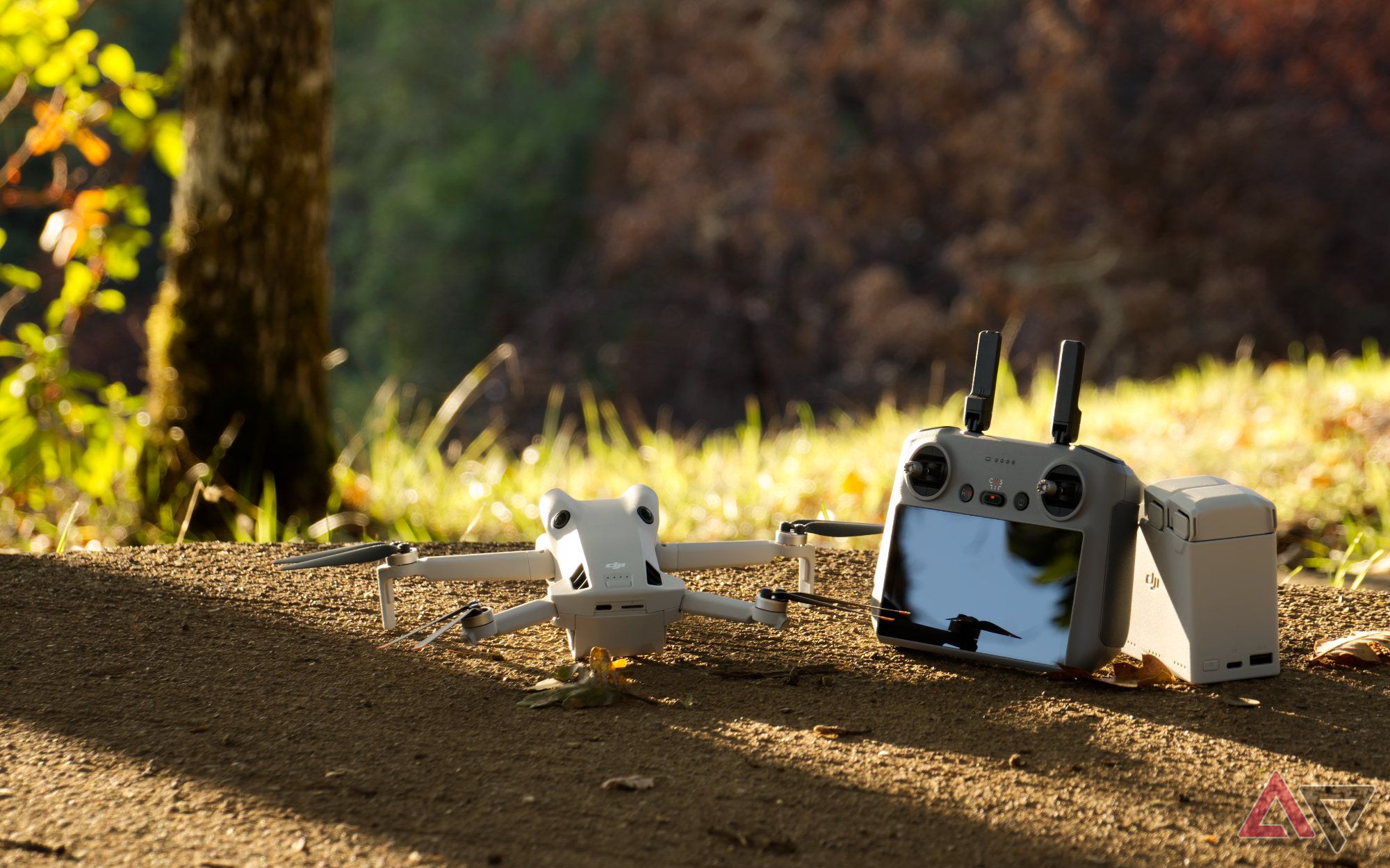Whether they’re used for shooting stunning flyover shots of nature or for inspecting a second story roof after a storm, tiny camera drones have found their place in society. The DJI Mini series has been an instant success and the ideal drone for beginners and enthusiasts alike. I was already a fan of the Mini 3 Pro, and now the Mini 4 Pro is a clear upgrade in virtually every way.
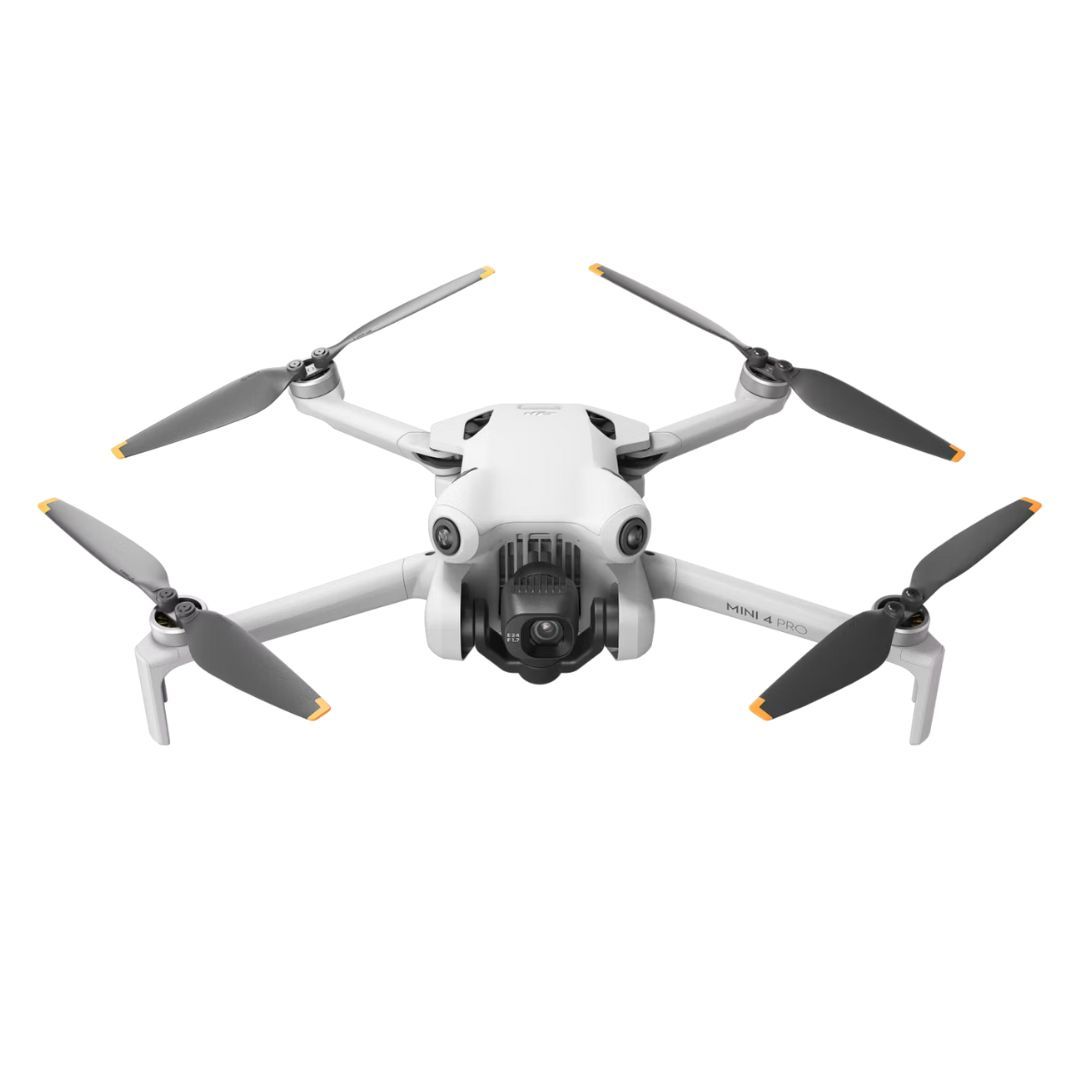

DJI Mini 4 Pro
Editor’s Choice
DJI’s fourth-generation Mini sticks to a tried and true formula, carrying forward many of the great qualities of the Mini 3 while enhancing many aspects.
- Small and portable design
- Sub-250g takeoff weight
- Great camera and flexible gimbal
- 34 minute flight time
- No AirSense ADS-B transponder
- Ultralight drones struggle in wind
Price, availability, and specs
Expect to spend at least $800
The Mini 4 Pro starts at $759 direct from DJI or from several other retailers. This includes the drone, a single battery, and the RC-N2 controller, which requires plugging in a smartphone to act as a touchscreen. It’s a bit pricey, but an extra $200 ($959 total) replaces the controller with the RC 2, which has a built-in touchscreen and operates the drone without a phone.
However, the Fly More Combo is a popular option for $1,099 and includes the drone, three batteries, the RC 2 controller, a carrying case, and a battery charger designed to hold all three batteries. If you’re okay with raising takeoff weight over 250g, an extra $60 upgrades the batteries to the extended Flight Plus models.
Don’t forget, the drone only includes 8GB of internal memory, so it really needs a fast microSD card to capture any reasonable amount of high-definition video and photos.
Specifications
- Brand
- DJI
- Camera
- 48MP 1/1.3-inch CMOS sensor, f/1.7 aperture
- Speed
- 16 m/s horizontal (36mph), 5 m/s vertical
- Weight
- Range
- 20 km
- Connectivity
- DJI O4
- Dimensions
- 148×94×64 mm (folded), 298×373×101 mm (unfolded)
- Video Resolution
- 4K (3840×2160) @ 100 fps, or 1080p @ 200fps
- Video Formats
- H.264/H.265, MP4/MOV
- Color Profiles
- Normal, HLG, D-Log M
- Bitrate
- 150 Mbps
- Battery Life
- 34 min (standard battery), 45 min (Flight Plus battery)
Hardware quality and design
Don’t fix what isn’t broken
I’m going to be saying this quite a few times during this review, but very little changed between the Mini 3 Pro and the Mini 4 Pro. That certainly applies to the body, which looks nearly identical aside from some new sensors and some very subtle tweaks to the design. Otherwise, the body is made of DJI’s standard light gray plastic, and the propeller arms fold just like previous Mini models. Sadly, this also means the propellers are locked to the motors with screws rather than springs, but it’s a small price to pay for weight reduction.
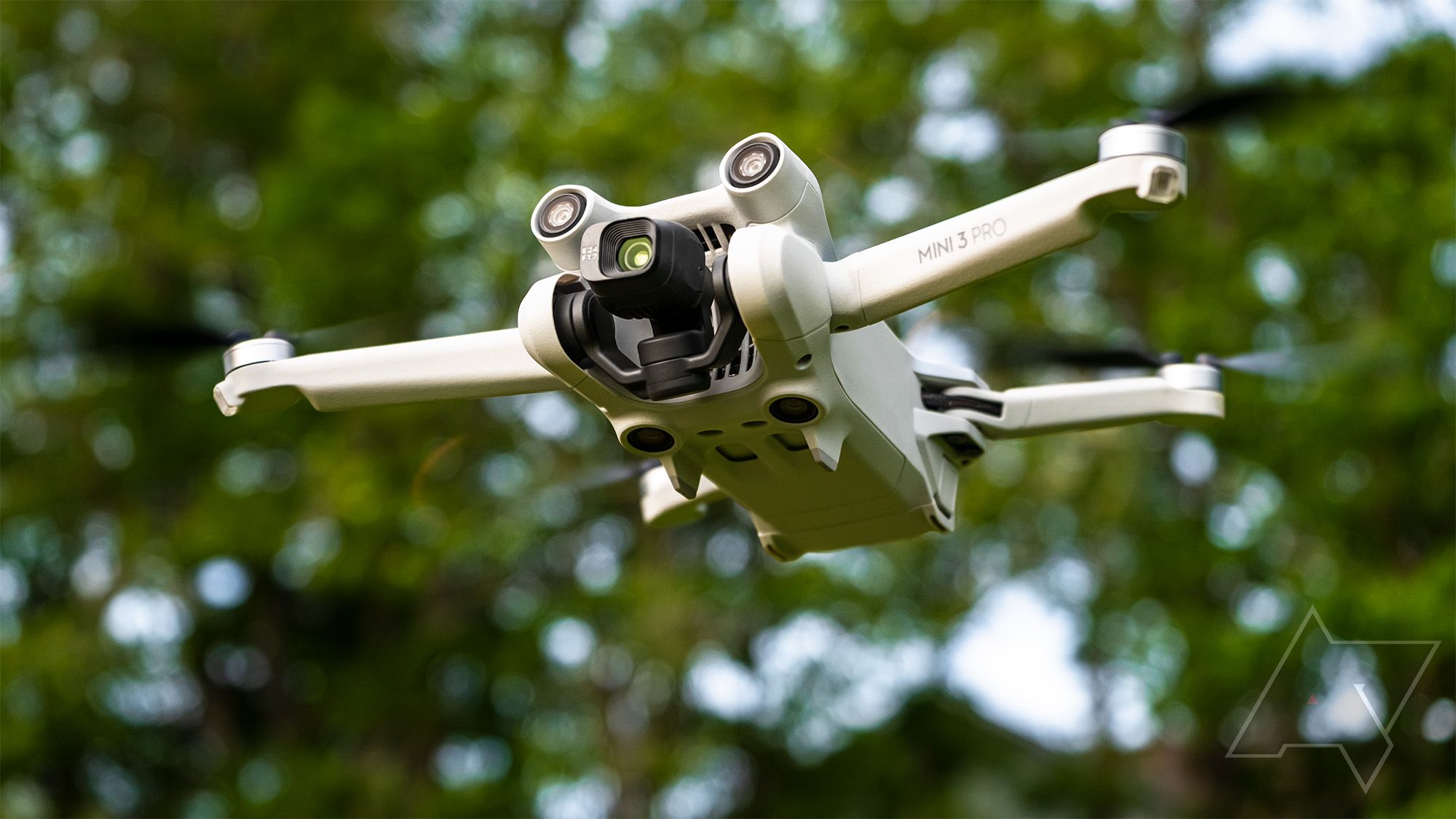
DJI Mini 3 Pro review: The best pick for a small drone
The near-perfect drone for almost everybody
And speaking of weight, the Mini line is known for being designed with a takeover weight that barely limbos under 250g. This gives it a special status as hobbyist equipment and avoids the minor cost and inconvenience of FAA registration, and allows for fewer flight restrictions in the US and many other countries. Of course, keep in mind that commercial use still requires a Part 107 in the US, and drone laws may apply.
Remote ID: Yes, AirSense: No
Let’s talk about communication standards. Remote ID isn’t required for drones weighing less than 250g, but it’s great to see the Mini 4 Pro is still equipped with a transmitter just in case more weight is added or the heavier Flight Plus batteries are used.
However, DJI didn’t include its AirSense ADS-B transponder for communicating with and detecting nearby manned aircraft. It’s not that this is a necessity for a tiny drone, but it was added to the Air 3 and Mavic 3 and would help pilots to prevent potential flight risks — and any potential negative publicity.
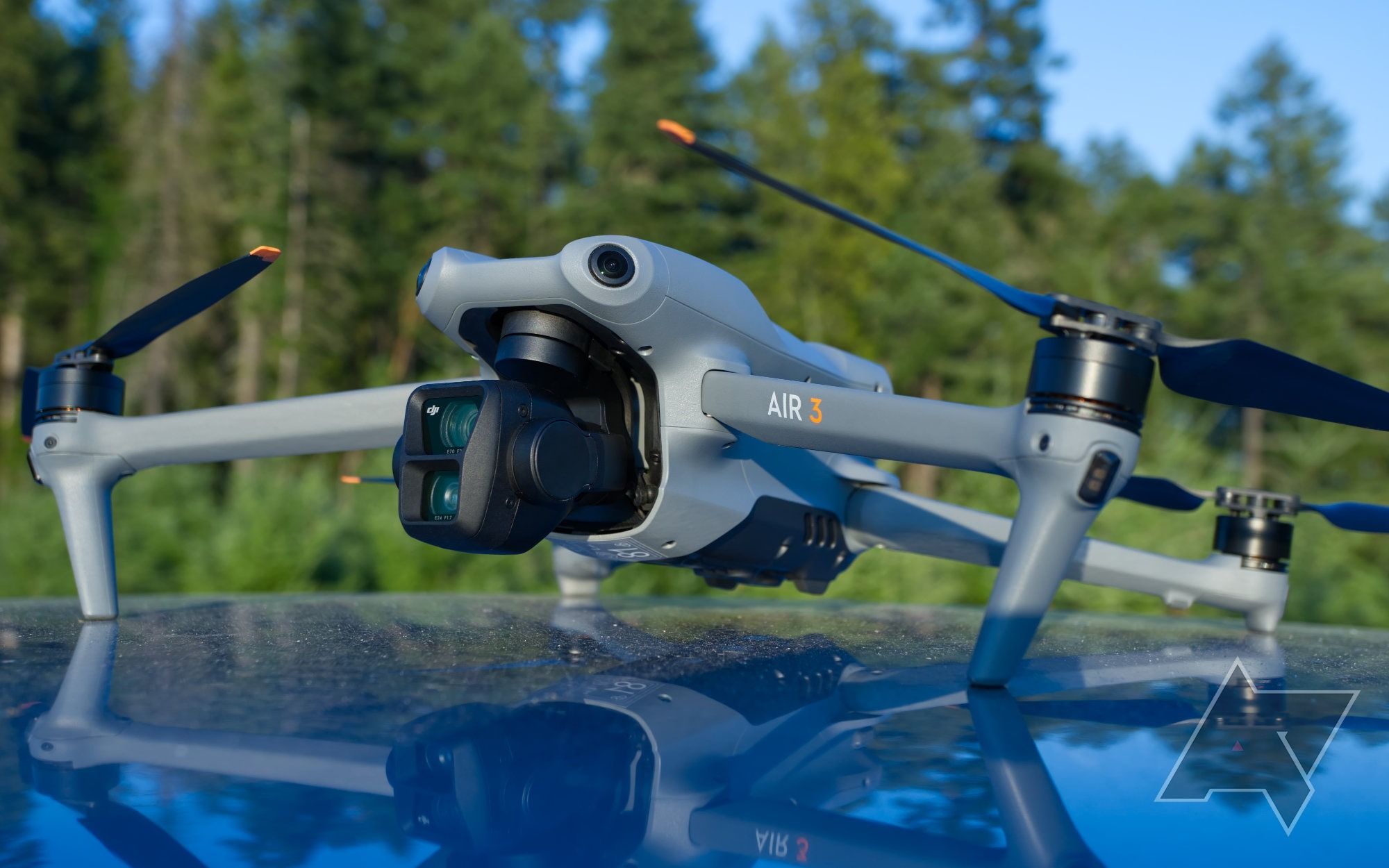
DJI Air 3 review: Jack of all trades, master of one
This is the right way to do two cameras
Watch those headwinds
Every generation seems to come with improvements to the motors and propellers, and DJI says the Mini 4 can handle a bit more turbulence than earlier models, but it’s still pretty vulnerable to wind. Don’t get me wrong, you won’t even notice a mild breeze; but if the wind picks up, it’s likely to push around any lightweight drone.
I rarely encounter significant wind in the spots I fly, but there was a day when a heavy breeze abruptly picked up and I could sense the Mini 4 struggling to fly into the wind as I brought it back for a landing. On another occasion, I took it out for a sunrise timelapse on a mountain top, and while I set a stationary position, the temperature changes caused enough wind to move and shake the drone quite a bit, ruining the video.
Eyes everywhere
DJI can finally boast that its whole lineup of Mavic drones have full obstacle avoidance in every direction. The Mini 4 Pro vision sensors now cover virtually every angle for better obstacle avoidance, including above or behind the drone. This wasn’t done through the addition of new sensors, but instead by adjusting the position of the previous model’s sensors and widening their field of view.
As a result, DJI enabled several of the more advanced flight modes, just like it recently did for the Air 3. This includes several previously unavailable or limited tracking shots, plus the Waypoints mode.
Camera quality and video sample
Filling in the gaps
The Mini line didn’t start with the best cameras, but they were good enough to have fun flying around and getting some okay shots. That all changed when the Mini 3 Pro began shipping with a camera that was effectively identical to its larger siblings, the Air 2 and Air 3.
So has DJI leveled up the camera for the fourth generation Mini Pro? Technically yes, it’s better; but I honestly can’t spot the differences. Outside of some generational improvements to the sensor that should squeeze a little more detail from low-light environments, the quality is virtually unchanged. Let’s be honest, it’s difficult to improve when the cameras are already so good.
While there’s not much new to say about visual quality, there are still some great technical improvements. Frame rates have been increased to match the Air 3, allowing more options for capturing slow motion shots. Shooting modes can now top out at 4K@100 and 1080p@200, up from 4K@60 and 1080p@120 in the Mini 3 Pro.
I’m also pleased to say that the Mini 4 Pro supports 10-bit HLG and D-Log M color profiles (in addition to 8-bit Normal), just like the Air 3. The Mini 3 Pro only supported Normal and D-Cinelike, which didn’t allow for as much flexibility, and required extra work to match colors with other DJI cameras. HLG and D-Log M can generally get more dynamic range in complicated lighting environments; but also, DJI seems to be standardizing around D-Log M in most consumer cameras, and making it a pretty good choice if working with multiple drones.
All of the previous Mini 3 Pro features remain, including the special vertical mode that rotates the camera 90° for an Instagram-friendly aspect ratio. While I still don’t find it particularly useful, it’s considerably more capable now thanks to the expanded tracking capabilities, which were virtually inoperable on the Mini 3.
Wrong way to start with Interchangeable lenses
For the first time ever, DJI is experimenting with interchangeable lenses, and I love the idea of adding more potential focal lengths without necessarily packing on additional cameras (and weight) like the Air 3 and Mavic 3.
However, only one model is available at launch, a $39 wide angle lens that adjusts the field of view from 81.5° to 114° in photos and from 75° to 100° in video. That might look like a lot on paper, but in actual use, it just feels like the drone was moved back a few feet. I can imagine it being useful in tight locations, but it’s not different enough from the standard lens.
Battery life and charging
Consistent as always
DJI drones have a reputation for exceptional battery life, and nothing has changed in that department. If there’s any surprise here, it’s that the battery life barely changed from the previous generation, and actually went down for some users.
Exactly like the Mini 3 Pro, the Mini 4 Pro is rated for 34 minutes with the standard battery. However, the Flight Plus battery, which weighs a bit more and pushes the Mini 4 Pro over the 250g threshold, actually nets just 45 minutes instead of the 47 minutes that the Mini 3 Pro could hit.
Charging is still fairly slow, and doesn’t benefit as much from a high-wattage charger compared to the Air 3 batteries. As always, this is a reason to consider the Fly More Combo for the additional batteries and a handy cradle for automatically charging the batteries one-by-one.
Competition: What other drones are out there?
DJI’s other offerings might interest you
Most people know DJI doesn’t have much viable competition in this particular market and price point, so it’s mostly a question of which model to get, and that comes down to the use cases. For anybody considering the Mini 4 Pro, it may be worth stepping up to the Air 3 to have the secondary medium tele camera. Alternatively, for those that don’t need the very specific improvements of the Mini 4 Pro camera, it’s possible to save some money while sacrificing relatively little by picking up a Mini 3 Pro, or even the non-Pro variant.
If you are looking outside of DJI, there have been some interesting drones coming from Autel, but none are really designed to directly compete with the Mini line. But if you’re already looking at the Mavic 3 and Air 3, there are options. Of course, just like DJI, Autel faces some of the same scrutiny as a Chinese company.
Should you buy the DJI Mini 4 Pro?
The Mini 4 Pro is possibly the best small drone on the market
I think I said it best in my review of the Mini 3 Pro when I said it’s easy to recommend to nearly anybody that wants a photo/video drone, and that sentiment continues unwaveringly with the Mini 4 Pro. Put simply, DJI managed to upgrade several aspects of the previous generations without making any meaningful sacrifices, and at no meaningful increase to price. It’s simply better across the board while retaining everything that was already great.
The only caveat is that some of the latest enhancements may not be necessary or even relevant to many people, so it’s practical to save some money by picking up an older Mini 3 (standard or Pro). Either way, given the lightweight and portable design, lower cost, and fewer flight restrictions, the Mini 3 and 4 are comfortably the best choices for most people.


DJI Mini 4 Pro
Editor’s choice
DJI’s fourth-generation Mini sticks to a tried and true formula, carrying forward many of the great qualities of the Mini 3 while enhancing many aspects.
Source link

